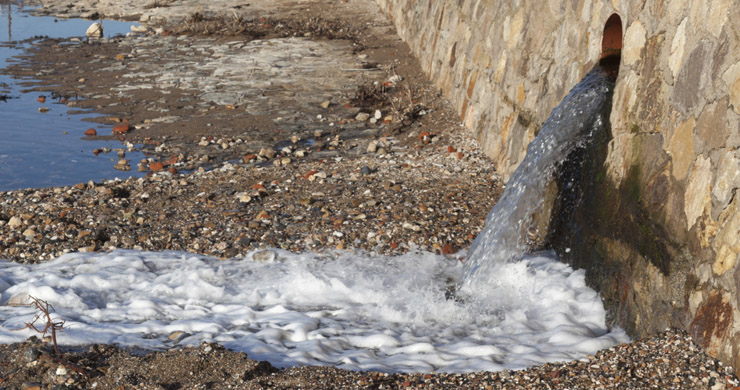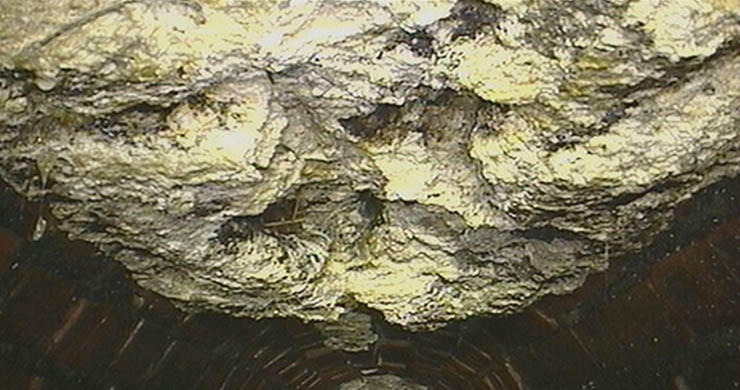Down the drain...
Down the drain…
In the first article of this ‘Sewage Special’ we read about the giant fatberg that was recently discovered blocking the sewers beneath Kingston upon Thames in London.
The fatberg really was a monster. "While we've removed greater volumes of fat from under central London in the past, we've never seen a single, congealed lump of lard this big clogging our sewers before," said a statement from Thames Water, the utilities company in charge of London’s sewer and water systems.
The company believe that it was the largest fatberg in British history. The question is, how did it form?
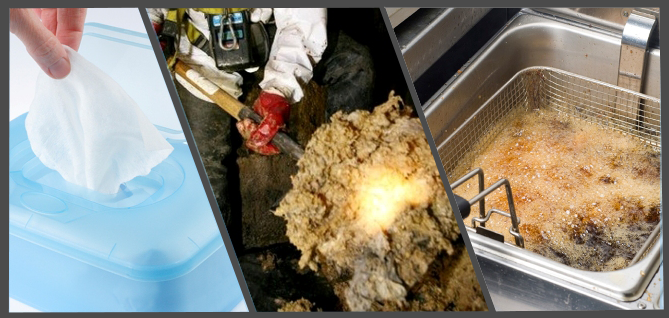
The answer can be found by looking at the make up of the ’berg itself. It wasn’t just congealed cooking fat and grease which had been poured down sinks and drains – the huge lump also contained thousands of wet wipes that had been flushed down toilets.
We can all guess what those wet wipes had been used for – eww, disgusting! Imagine having to clear up a bus-sized lump like that.
When they made their way into the sewers, Hailwood and his intrepid team discovered an enormous mass of rotting fat and toilet waste nicknamed a 'fatberg'.
This size of this particular blockage has captured the interest of newspapers and television channels in the UK and abroad. However, it isn’t a one off. Thames Water, one of the 12 utilities companies in the United Kingdom who deal with sewage, clear more than 40,000 blockages of fat and sanitary wipes each year from the 59,000 miles of sewers that they manage.
The map below shows the main sewers in London as they were in 1930. The sewers have been extended and improved massively over the last 80 years, an indication of not only the growing population of the city but also the increasing amount of waste being produced. Click here to view and download a larger version of the map.
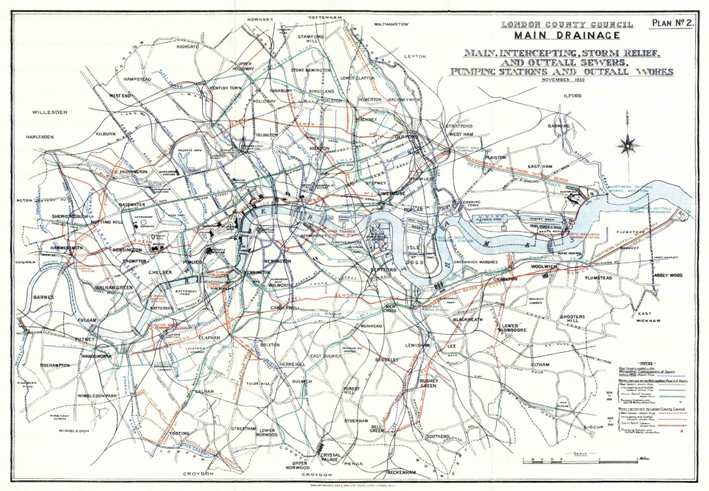
A very public problem...
Studying the physical infrastructure of wastewater management systems can tell us a lot about, for example, the development of societies, the impacts of population growth in urban and rural environments and the role of local and national governments in ensuring the health and security of their citizens.
In this article, however, we will be focusing on challenges facing the utilities companies who deal with our wastewater as they try to deal with the billions of litres of sewage we produce each day. One of the biggest challenges is educating the public, businesses and industry about what should and should not be poured and flushed into the sewage system.
We will start by looking at some eye-catching (and stomach-churning) examples of unwanted items found in the sewers.
1. Flushed away...
Dŵr Cymru/Welsh Water has compiled a ‘dirty dozen’ of things which are often flushed down the toilet but shouldn’t be. These include:
-
cotton buds
-
wet wipes
-
nappies
-
sticking plasters
-
sanitary towels
-
cotton wool

Last year the company removed around 1.3 million cotton buds from the sewer network in Wales. They also found razor blades, toothbrushes, soft toys and, you guessed it, goldfish...
None of these items, not even baby wipes, will break down in the water. In fact, water industry tests show that anything other than normal loo roll can cause blockages. However, there are no rules about companies selling other products as ‘flushable’ so educating the public is essential to keep the sewers flowing freely.
2. Down the plughole
According to the Office for National Statistics there are 23.4 million households in the UK. Add in the 400,000 or more restaurants, cafes and canteens and that’s a lot of cooking going on around the country.
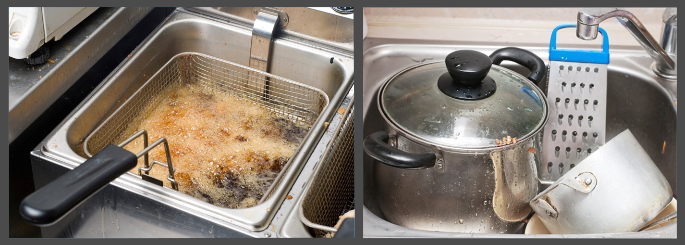
Thames Water estimate that between 32 and 44 million litres of cooking oil is used in London each year. Much of that ends up being poured into drains and sinks instead of being disposed of properly. Hot fat and oil quickly cools down and turns solid in the drains and sewer pipes and can quickly stop water from flowing with very unpleasant consequences.
Councils around the UK are starting to provide cooking oil recycling services. In the meantime, water companies have been campaigning to raise awareness of the problems it can cause. They recommend letting the oil or fat cool completely then putting it into the rubbish bin – which makes sense when clearing fat blockages in London alone costs around £12,000,000 each year!
3. Everything, including the kitchen sink...
Dŵr Cymru/Welsh Water started their own campaign in April 2013 to highlight the importance of keeping the sewer system clear. One of the unlikely objects found in sewers in North Wales was a mini motorbike, along with a net from a football goal, several tricycles and large cuddly toys.
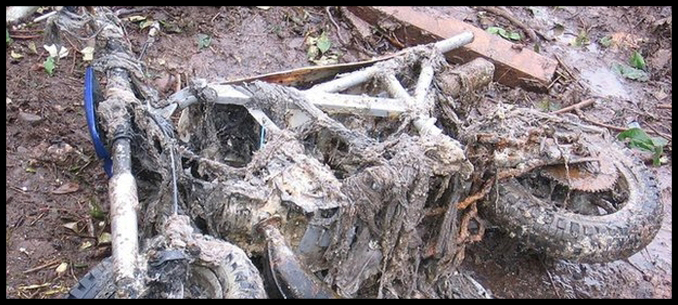
Scottish Water has published a list of the 20 weirdest things found in Scotland’s sewer network. Here are some of the highlights:
-
a live badger (he made a full recovery)
-
a goldfish that now lives safely in a bowl (and is called Pooh)
-
a deckchair
-
false teeth
-
mobile phones
-
a traffic cone
-
a clothes iron (which still works)
-
an Action Man and an entire platoon of toy soldiers
It’s not just goldfish and badgers that have survived in sewers – back in 1935 a fully grown alligator was found in the sewers in Harlem, New York. More recently, Geoff and Linda Peck from Cleethorpes in northern England had a shock when a black Mexican king snake crawled out of their drain.
If you prefer a slight more cuddly-looking sewer dweller, take a look at this footage of another unexpected resident of underground Bournemouth...
4. Too much water...
Watch the video below:
What’s happening? Remember our fifth category of wastewater? Surface runoff – rain water that runs off the top of the ground (or roofs, in cities and towns). That water has to go somewhere.
In the countryside it enters streams and rivers but in urban areas there may not be these natural watercourses and the rainwater enters the sewers via gutters, channels and drains.
Very heavy rain can overwhelm the system causing it to flood.
In artificial watercourses like drains and the water cannot spill over the side, like it would in a river. Instead, the pressure builds up and water starts to flood out of any openings that are available.
Even when it is just rainwater this can be very dangerous. When sewers are combined – carrying surface runoff and wastewater - then floods may bring up raw sewage from the drains.
In countries where wastewater management is limited then severe flooding often causes outbreaks of cholera and other diseases as human and animal waste is carried into the streets and houses.
Taking responsibility...
Blockages caused by unsuitable waste being flushed and poured into the sewage system can cause flooding. Water companies spend time and money educating their customers about these risks, and we will look at these campaigns in more detail in the final article.
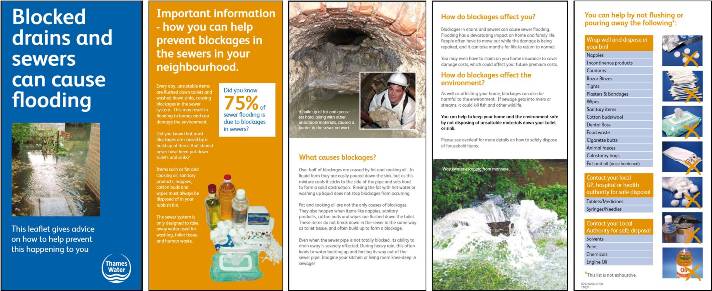
Information leaflet highlighting the danger of blocked drains (c) Thames Water
We will also look briefly at some practical projects that water companies are using to prevent and solve problems with the wastewater infrastructure that serves the UK’s population in villages, towns and cities across the country.
Pupil Activity
This activity follows on from the last in which you found out about a particular type of wastewater (sanitary, commercial, industrial, agricultural, surface runoff).
Using the internet and other sources of information, find out:
-
How your chosen wastewater category might cause blockages in drains, sewers or watercourses
-
What the particular risks or dangers are if your chosen type of sewage is not dealt with properly (disease, pollution etc)
Using text and images produce a poster about your chosen category of wastewater which includes some of the information that you have collected.
Give your poster to your teacher for marking.
